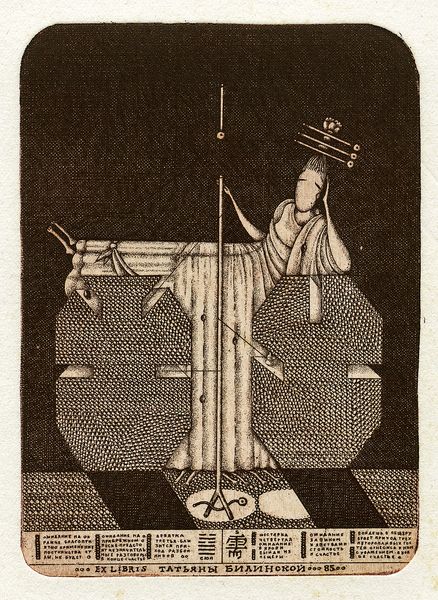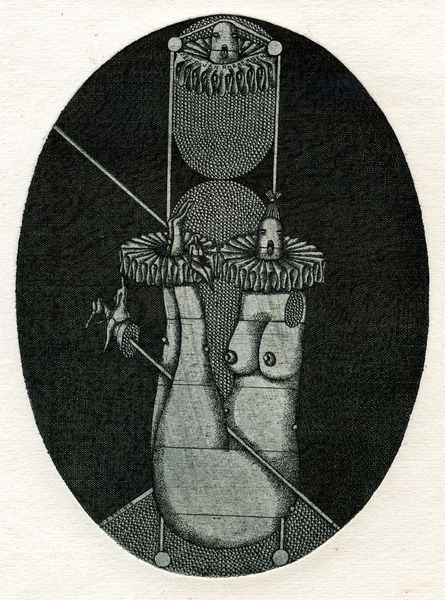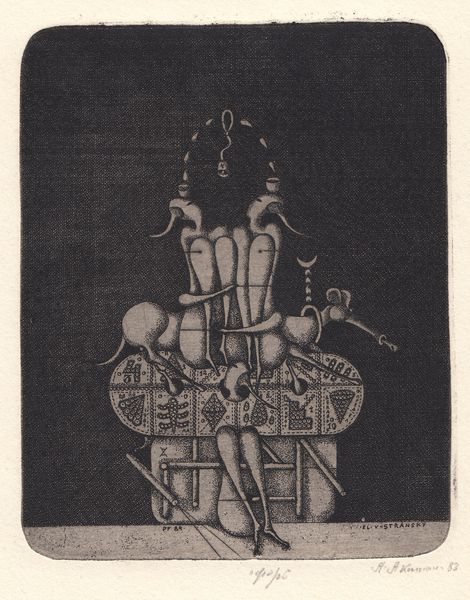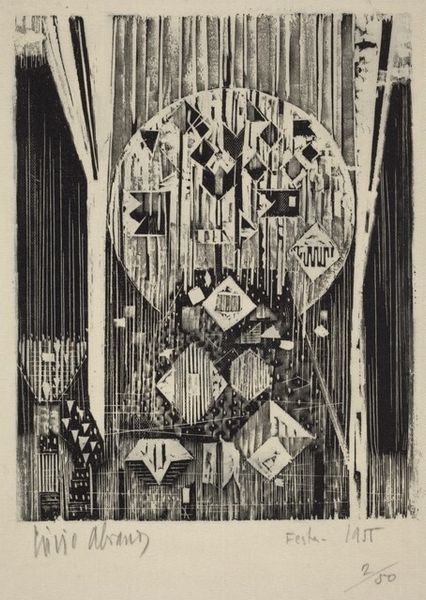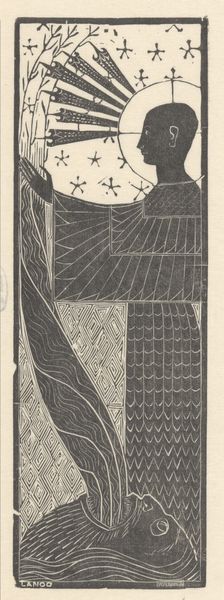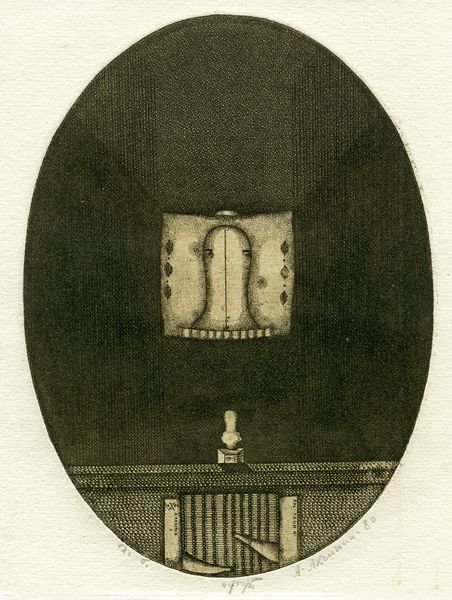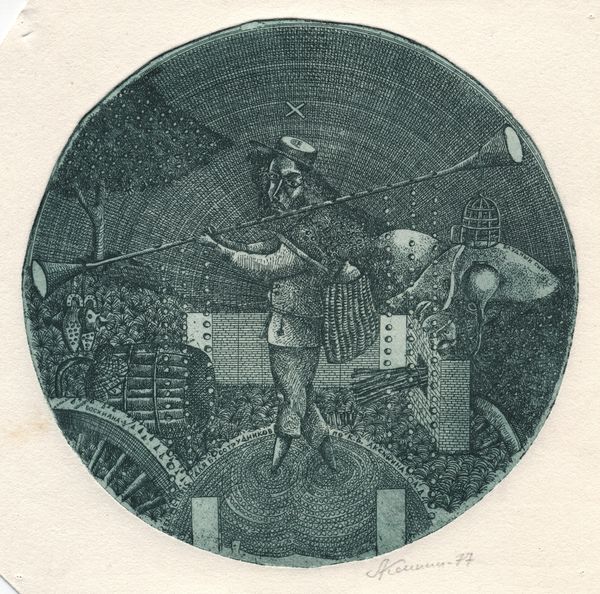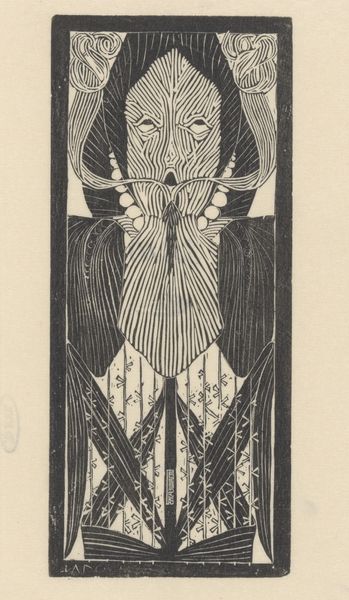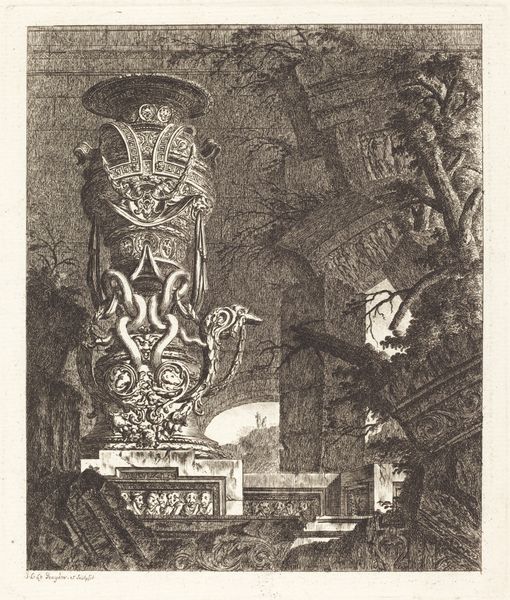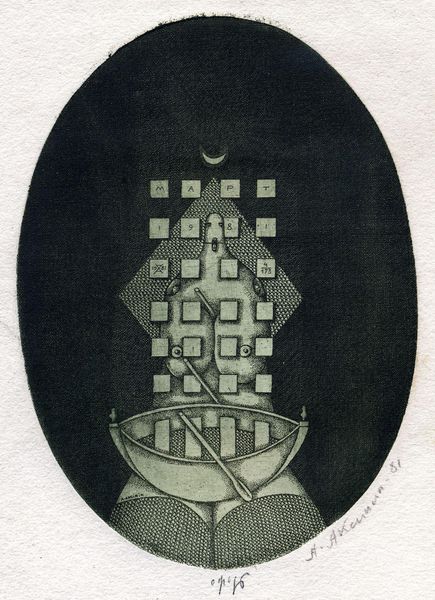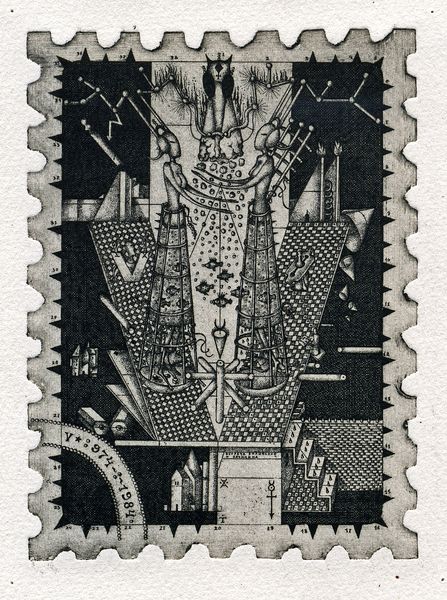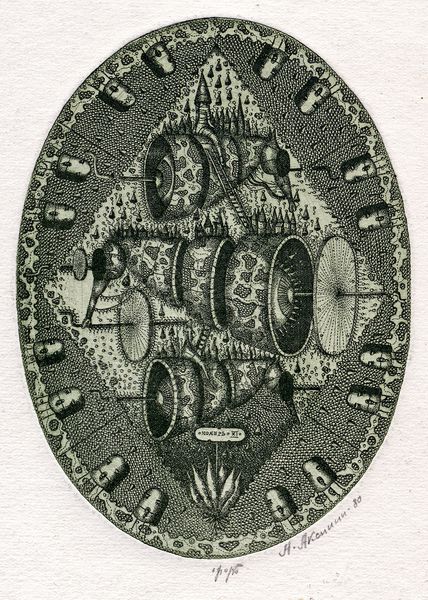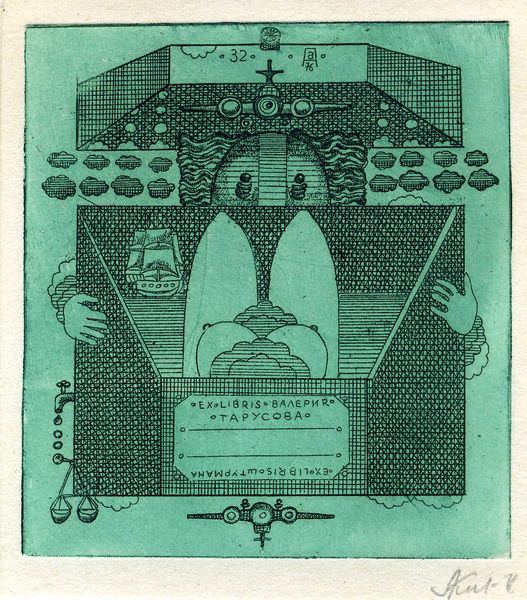
drawing, print, ink
#
drawing
#
type repetition
# print
#
figuration
#
ink
#
geometric
#
line
#
surrealism
#
miniature
Copyright: Oleksandr Aksinin,Fair Use
Editor: So, this is Oleksandr Aksinin’s "Exlibris of V.Onusaitis," from 1981, made using ink and print. It has such a strangely unsettling, intricate quality. It feels both precise and deeply dreamlike. How do you interpret this work? Curator: Intricate indeed! It's like peering into the mind of a watchmaker who's taken a detour through a Borges story. Look at how Aksinin crams these dense patterns within the oval format. It’s a pressure cooker of symbolism, don't you think? This isn't just a bookplate; it’s a tiny universe. Are you familiar with Ukrainian bookplate art of this period? Editor: Vaguely. I mostly see the surreal elements, this figure cobbled together from what looks like machine parts and eyes, all set against a strange architectural space. Curator: Precisely! Think of this piece as a visual poem, a clandestine whisper against the rigid structures of Soviet power. Bookplates, often small and personal, became a vehicle for artists to express veiled criticisms or celebrate suppressed cultural identities. What do you make of the geometric patterns combined with that very pronounced figuration? Editor: They amplify the sense of unease. It's like a controlled chaos. I never would have considered it a form of subtle protest! Curator: Exactly. Aksinin uses surrealism as a sanctuary. The miniature scale concentrates its power. A book, a portal, a revolution in your pocket. It really makes you consider the hidden language of art. Editor: I see it so differently now! This gives me so much to think about in my research. Curator: And that, my friend, is the joy of discovering art, layer by layer, a journey into someone else's interior world, always resonating back towards our own.
Comments
No comments
Be the first to comment and join the conversation on the ultimate creative platform.
